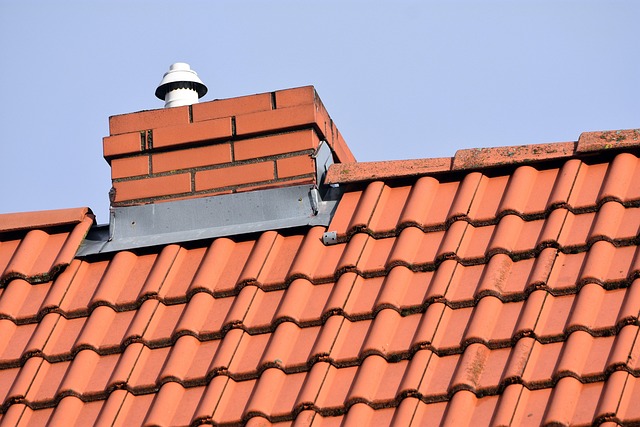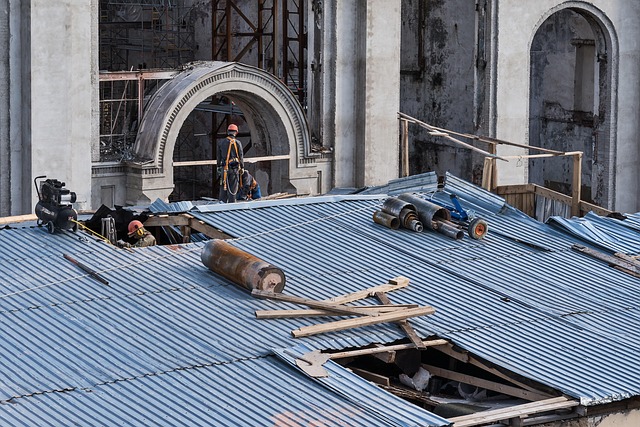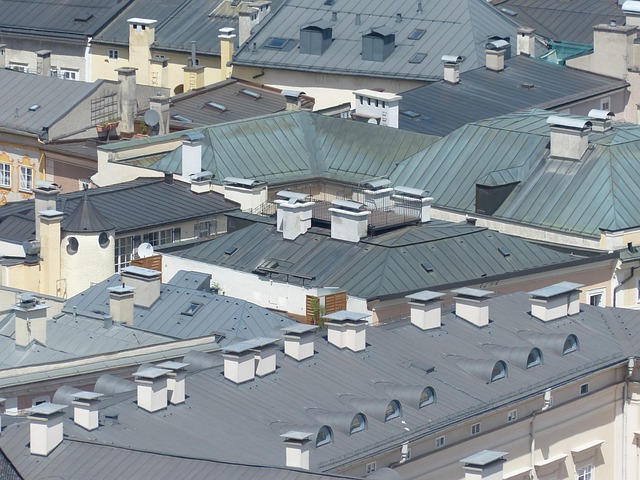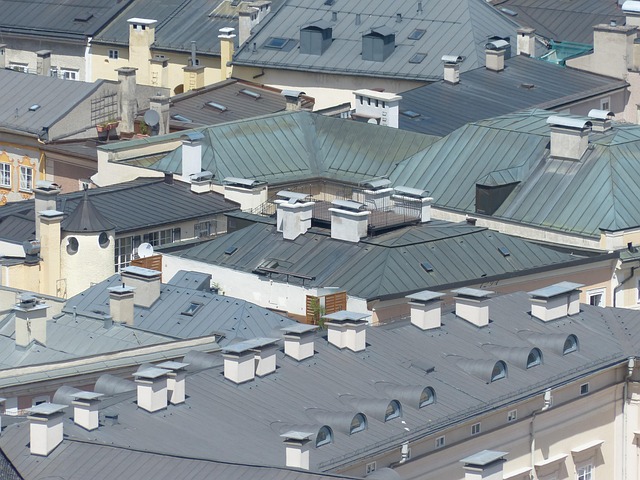Built-up roofing systems are durable multi-layered structures for flat commercial roofs, featuring bitumen as a flexible base coated with gravel or aggregate. They include multiple plies of asphalt felts or sheets for insulation against extreme temperatures and UV radiation. This system offers exceptional strength, weather resistance, and longevity, making it cost-effective and reliable for commercial buildings. Regular maintenance is crucial to prevent damage and extend the lifespan of these complex roofs.
“Built-up roofing systems, a multi-layered solution prevalent on flat commercial buildings, offer superior protection against environmental elements. This comprehensive guide delves into the intricate details of these systems, exploring each layer’s function and the materials that compose them. From installation techniques to maintenance strategies, we unravel the benefits and challenges. Discover how built-up roofing enhances structural longevity, and gain insights into repair methods for common issues. By understanding these aspects, property managers can make informed decisions regarding this essential component of commercial construction.”
- Understanding Built-Up Roofing Layers
- Materials Used in Commercial Systems
- Installation Processes and Techniques
- Benefits for Flat Commercial Structures
- Maintenance and Longevity Considerations
- Common Challenges and Repair Strategies
Understanding Built-Up Roofing Layers

Built-up roofing systems are a multi-layered construct designed to provide robust protection for flat commercial roofs. Understanding these layers is essential when it comes to maintenance and repair. The foundation lies in the bitumen roofing layer, a flexible membrane that acts as a barrier against water penetration. This is typically reinforced with a gravel roof or a similar aggregate topping, enhancing both the system’s durability and fire resistance.
Above this base, multiple layers of asphalt felts or sheets are added, creating a multi-ply roof. These layers not only provide additional protection but also serve as a cushion against environmental factors like extreme temperatures and UV radiation. The precise number of layers can vary based on the building’s needs, climate, and local regulations.
Materials Used in Commercial Systems

Built-up roofing systems, a common sight on flat commercial buildings, are renowned for their durability and versatility. These intricate multi-ply roofs typically comprise several layers designed to withstand the elements while providing long-lasting protection. The core component is bitumen roofing, a flexible and water-resistant material that forms the basis of each layer. This is then reinforced with fabric or polyester sheets for added strength and protection against punctures.
On top of these foundational layers, a gravel roof is often incorporated, offering not only aesthetic appeal but also functional benefits such as insulation and UV protection. The combination of bitumen roofing and gravel creates a robust barrier that can withstand extreme temperatures, heavy rainfall, and even strong winds—a testament to the reliability of this commercial roofing system.
Installation Processes and Techniques

The installation process of built-up roofing systems involves several precise steps to ensure optimal performance and durability. It starts with preparing the substrate, which may include cleaning the surface and applying a primer to enhance adhesion. The primary layer is then laid down, typically composed of hot-applied bitumen roofing, carefully spread evenly across the entire roof area. This acts as a strong foundation for subsequent layers.
After the initial coat sets, additional layers, known as plies, are added. Each ply consists of a fabric reinforcement soaked in bitumen, followed by a gravel or other aggregate top layer for protection and finishing. The multi-ply roof construction provides exceptional strength and weather resistance. This intricate layering process is what differentiates built-up roofing from traditional single-layer membrane systems, making it a popular choice for commercial buildings seeking robust, long-lasting protection.
Benefits for Flat Commercial Structures

Built-up roofing systems, consisting of multiple layers of bitumen and reinforced with fabric or paper, offer numerous advantages for flat commercial structures. One of the primary benefits is their exceptional durability. These systems are designed to withstand extreme weather conditions, including heavy rainfall and strong winds, making them a reliable choice for long-term protection.
Additionally, built-up roofing provides excellent insulation, which is crucial for maintaining optimal indoor temperatures. The multi-ply structure creates a robust barrier against heat transfer, reducing energy costs associated with heating and cooling. Moreover, gravel roofs or bitumen roofing, as they are sometimes known, offer a cost-effective solution due to their longevity and the minimal maintenance required compared to alternative flat roof systems.
Maintenance and Longevity Considerations

Maintaining a multi-layered built-up roofing system, often referred to as a gravel roof or multi-ply roof, is key to ensuring its longevity. These systems, typically made with bitumen roofing layers, require regular inspection and timely repairs to prevent small issues from escalating. Regular cleaning of the roof surface, removal of debris, and inspection for signs of wear, tear, or damage are essential components of preventative maintenance.
Proper installation techniques, combined with a robust maintenance program, can extend the lifespan of these complex roofing structures. By addressing any problems early on, building owners can avoid costly replacements and ensure the continued protection of their commercial properties. Effective maintenance not only preserves the structural integrity of the roof but also safeguards against potential water damage, which could compromise the entire building’s framework.
Common Challenges and Repair Strategies

Built-up roofing systems, often comprising multiple layers of bitumen and reinforcement fabrics, are a common sight on flat commercial buildings. However, these intricate structures present several challenges. Ageing, exposure to harsh weather conditions, and incorrect installation can lead to issues like cracking, delaminating, or water penetration. Repairs for built-up roofing require careful assessment as damage might extend deeper than the surface.
One common repair strategy involves replacing damaged or deteriorated sheets with new ones, ensuring proper alignment and sealing of joints. For bitumen roofing, reapplication of coal tar or hot asphalt may be necessary to restore waterproofing. In cases of gravel roofs or multi-ply roofs, removing loose gravel or plies and re-fastening them can help strengthen the system. Regular maintenance, including inspection and cleaning, is crucial to prevent major repairs and extend the lifespan of these complex flat roofing solutions.
